There are innumerable highlights of diving in the Alor Archipelago and the Savu Sea, but one of our all time favourites is the chance to dive with hammerhead sharks. Whether it’s a lone individual or a school of 40 sharks, we are extremely privileged to have regular sightings of these ancient predators. In this article, we take a closer look at hammerhead sharks, the species of hammerheads found globally, surprising facts about hammerheads, and the hammerheads that we see when exploring Alor.
Introducing Hammerhead Sharks
Hammerhead sharks are one of the most recognisable ocean creatures and perhaps the most distinctive of all shark species, largely thanks to their cephalofoil. The term ‘cephalofoil’ refers to either of the two outward extensions found on this shark’s head – and from where it takes its name.
Hammerhead sharks are found globally, mainly in the warm waters around Central America, Southern America, Africa, Asia, and Australia. Great hammerhead sharks can live for around 44 years, with other species averaging 25 to 30 years. Depending on the species, hammerhead adults can measure anywhere from 1meter to 6meters in length (3feet to 20feet).
Hammerheads survive on a species of small fish, stingrays and octopus. Hammerheads are apex hunters. They are known as the ‘Kings of the Ocean’ and they have no natural predators of their own.
Note: Although they have no predators, hammerhead attacks by orcas, dolphin pods, and other shark species have been recorded in the past.
Below are 12 facts about hammerheads, and the hammerheads that we see in Alor. We hope that you will find these as impressive as we do!
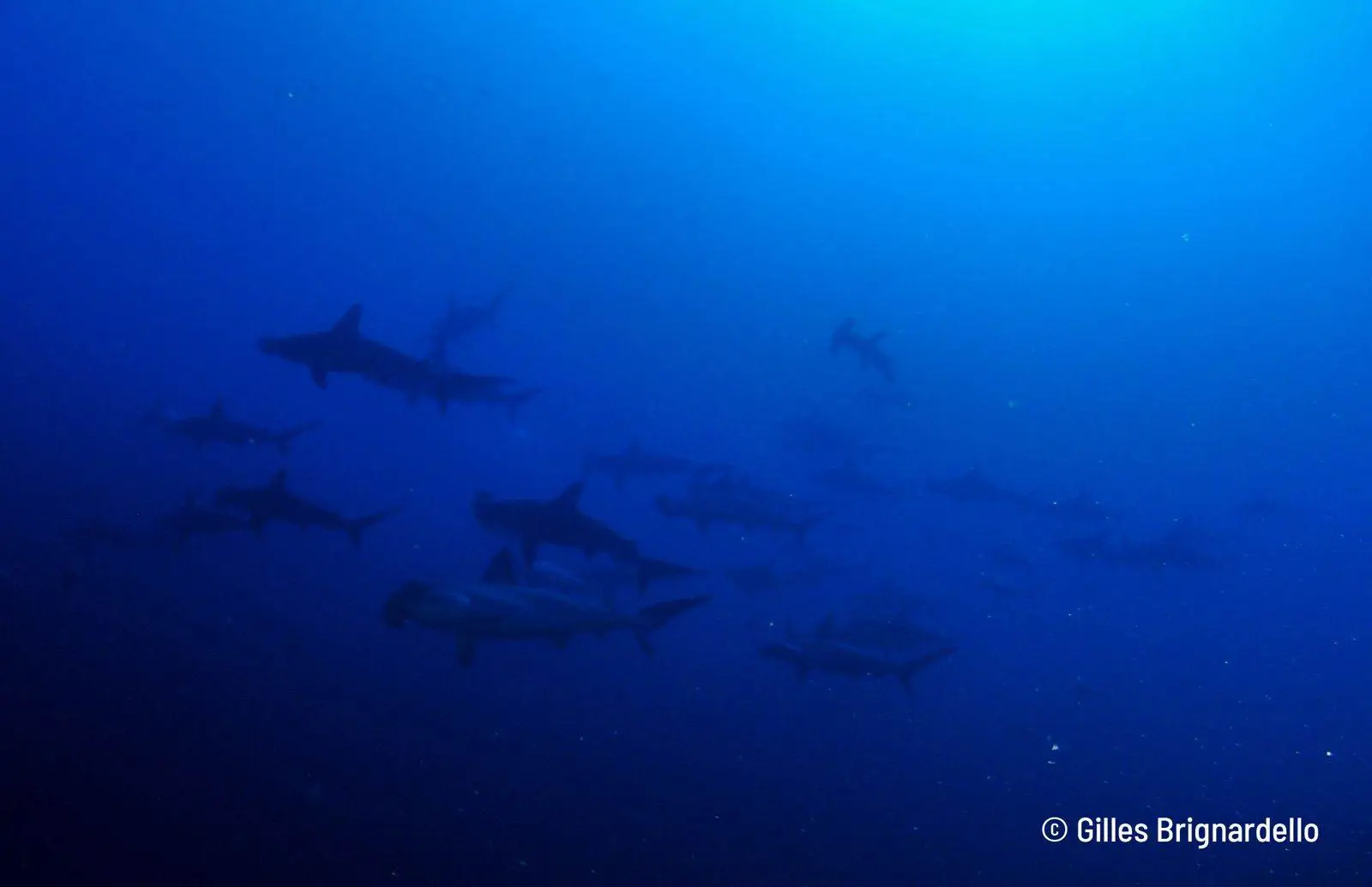
1. There are 9 Species of Hammerhead Shark in the World
There are at least nine species of hammerhead shark known to exist in the world. Some studies have suggested there are more than nine species, but this has yet to be confirmed by science.
The nine officially recognized species include:
- Scalloped Hammerheads
- Great hammerheads
- Smooth Hammerheads
- Small-eye Hammerheads
- Carolina Hammerheads
- Whitefin Hammerheads
- The Scoophead
- The Bonnethead, and
- The Scalloped Bonnethead.
Despite there being multiple species of hammerheads, they are almost all threatened in some form and many are listed as critically endangered on the IUCN Red List – largely due to human activity.
2. The Cephalofoil is Not Just Decoration
The cephalofoil is responsible for the distinctive shape of the hammerhead group but also serves many purposes including giving the shark superior depth perception and binocular vision. The cephalofoil also aids hammerheads in underwater navigation and in the search for food.
Scientists believe that the size of the cephalofoil means that hammerheads have a far greater number of electroreceptors than other sharks – increasing their navigational and prey detection abilities proportionately.
3. Hammerheads are Headhunters
The name ‘hammerhead’ is not only due to this species’ appearance. When hunting, hammerheads will often use their head to ram and eventually pin down prey. This unique hunting technique, tires our prey quickly making them easier to manoeuvre and eat. The hammerheads hunting abilities are a true demonstration of this sharks power, strength and technique.
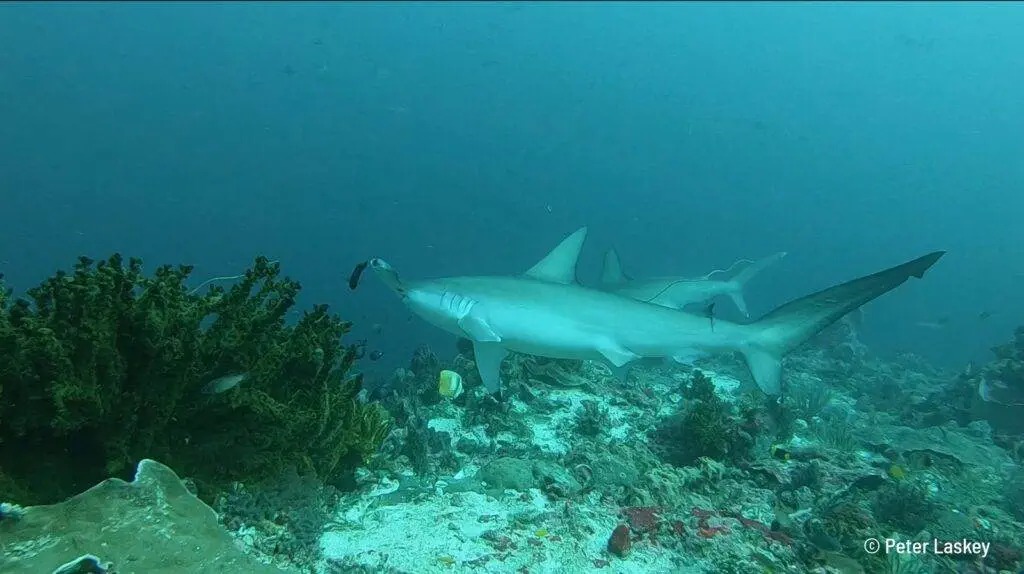
4. Hammerheads have 360° Vision but Cannot See Directly in Front
As mentioned above, hammerheads have incredible vision and depth perception – better than most other species of shark. The position of one eye at each end of their head allows them to see everything around them – all of the time, giving a complete 360-degree range of vision. However, this advanced adaption comes with a slight caveat in the form of a blind spot – right in front of them. Divers have even observed small fish hiding right in front of a hammerhead’s nose (see the image above).
5. Stingray Barbs? No problem…
When it comes to a hammerheads number one choice of prey, stingrays top the list. As most readers will be aware, a stingray is largely dependent on its stinging barb to protect and defend itself against attacks from predators – but this reliance does not apply to hammerheads. Although stingray barbs may cause, pain, swelling, and nausea (or worse) in humans and other marine species, over the course of evolution, hammerheads have developed a tolerance to stingray stings. Some carcasses of hammerheads have even been recovered with large pieces of broken stingray barbs embedded in the sharks skin (but not being the cause of death).
6. Hammerheads are not as Old as Other Shark Species
While sharks have been around since the time of the dinosaurs and can be traced back to at least 420 million years ago, hammerheads are relatively ‘young’. The earliest hammerheads are thought to have been around for only 20-25 million years – making them one of the newest species of shark.
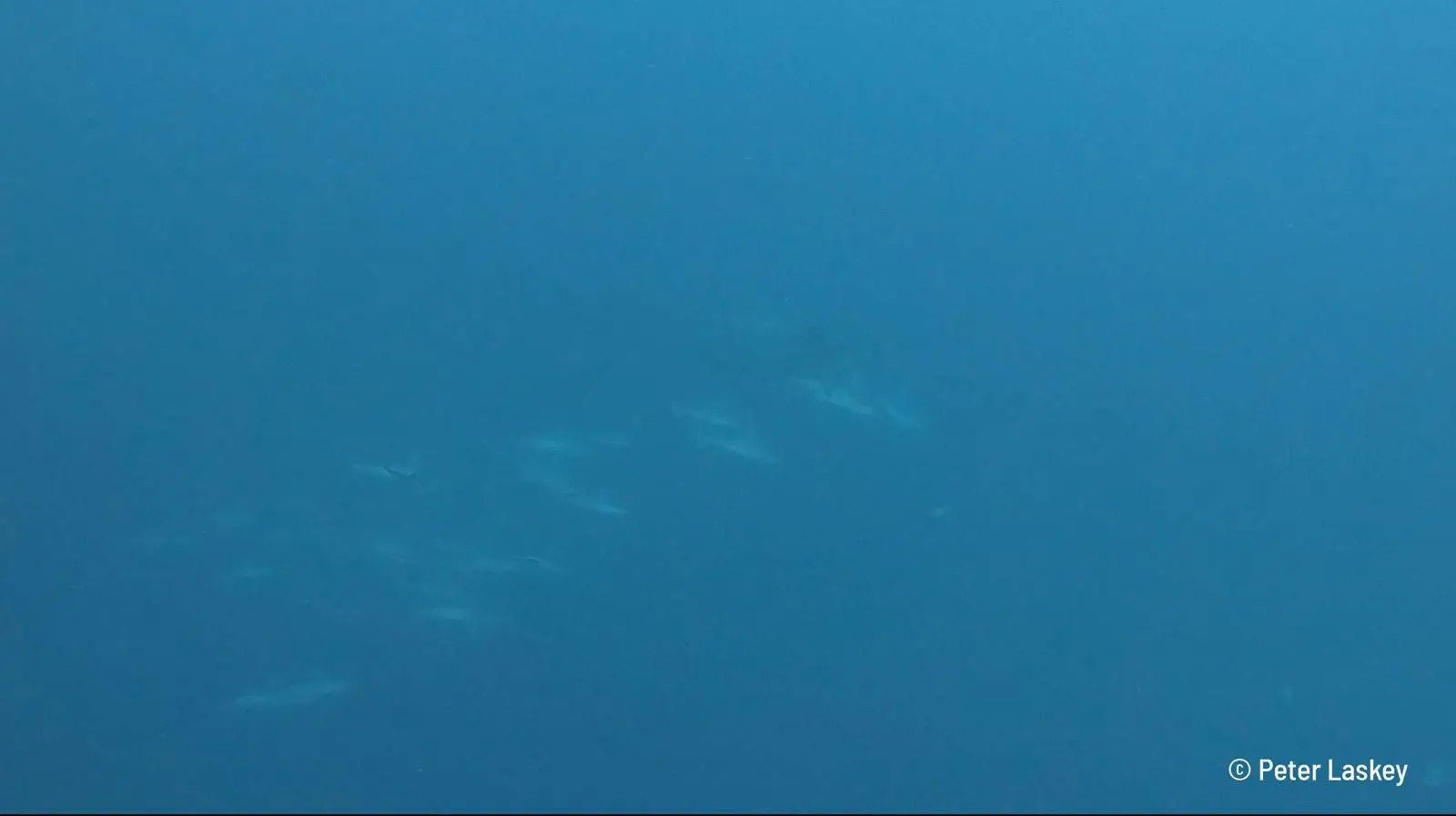
7. Hammerhead Sharks Develop Cancer-Free Suntans
Hammerheads are known to frequent shallow waters where they appear to bask in the sunlight. As a result of exposure to sun, and much like humans, shark skin tans! A hammerhead’s skin may turn from light grey to dark grey due to prolonged sun exposure, and unlike humans, hammerheads are not at risk of skin cancer.
Note: How hammerheads can tan without developing cancerous skin cells is being scientifically and medically researched extensively. The results may be critical in uncovering how to prevent and treat melanoma in humans.
8. Great Hammerhead Sharks Swim Sideways
Unlike in most other shark species where the pectoral fins are longer that the first dorsal fin, hammerheads have different fin configurations. Generally speaking, their first dorsal fin is longer than their pectoral fin and this impacts on the way they swim. By tilting, they’re able to use their dorsal fin instead of their smaller pectoral fin, reducing drag and expanding their ‘wingspan’ which increases swim efficiency. This results in an appearance of swimming sideways!
9. Hammerheads Exhibit ‘Virgin Births’ and Give Birth to Live Pups
Perhaps one of the most fascinating facts about hammerheads is the female’s ability t fertilize her own eggs without a male. This process is called parthenogenesis and is most commonly observed in female Bonnethead Hammerheads. Scientific testing has confirmed that no paternal DNA was present in any of the offspring included in the testing.
Hammerhead offspring are known as pups and the female’s gestation period is around 8 – 10 months according to the species. Pregnant female hammerheads will eventually give birth to up to 50 live pups. Once born, there is no parental care given to the offspring – which are therefore required to be independent from birth.
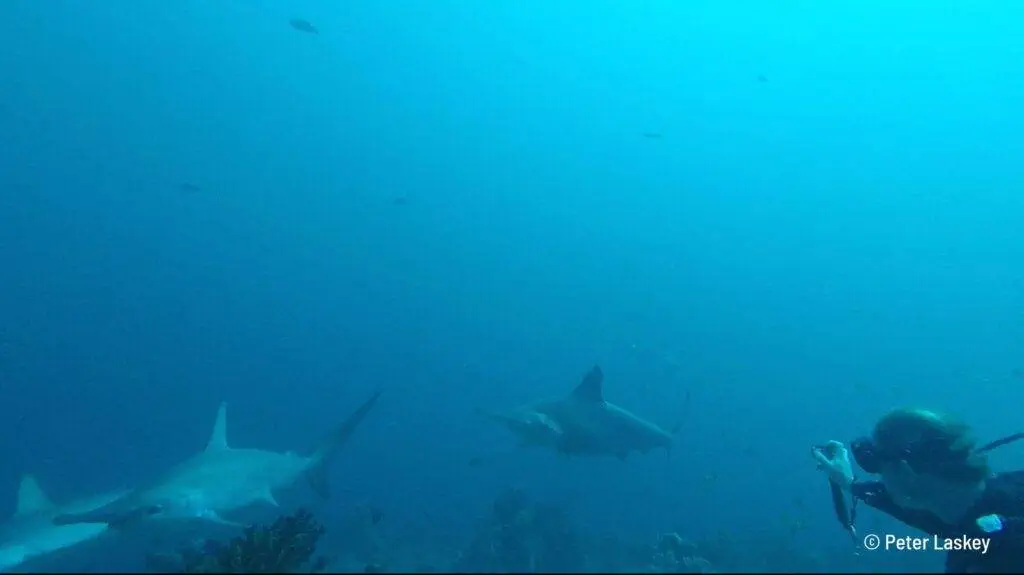
10. Schooling Hammerhead Sharks
Hammerheads are known for their unusual schooling habits. While they are known to travel in schools of up to 500 individuals during the day, this is rarely witnessed during the night. As the sun sets, the school will split into smaller groups, or individuals will leave the group in favour of spending the night solo.
The following morning, the group may or may not reform and there can be more, less, or different individuals to those found in the original group.
11. Hammerheads and Hammerhead Species in Alor
Here in Alor and the Savu Sea, hammerhead shark sightings are a highlight for anyone who stays and dives with us – and for ourselves and our team. We are fortunate to be treated to sightings of both scalloped hammerheads as well as great hammerheads. The sightings of these two species are quite distinctive. We see schools of scalloped hammerheads to the north of Pantar, whereas we most commonly experience individual sightings of great hammerheads around Pura and further to the south of the Alor Archipelago.
The best time for schooling scalloped sightings are from March until June and again from late September through to December when the best sightings are around full and new moon. At these times we have seen schools of up to 40 individuals. However, if you are unable to travel for the schooling scalloped hammerheads during these windows – our sightings of individual great hammerheads are all year round!
Note: For schooling hammerheads, we schedule our 45 minute boat ride with the lunar cycle. If you are hoping to see schooling hammerheads during your stay, let us know in advance and we can advise you of the best dates.
12. Alor Archipelago’s Importance as a Recognized Shark and Ray Area
We are delighted to announce that our recent joint proposal for having the Alor Archipelago declared an Important Shark and Ray Area under http://sharkrayareas.org has been passed!!
We were asked to collaborate on this official initiative by experts , including Mark Erdman, and his former colleague Abraham Sianipar, from Conservation International and Rafid Shidqi – a founder of Thresher Shark Indonesia.
This is exactly the type of success that inspires us to do more – we are constantly pushing governments and interested stakeholders to protect the species that pass through our waters. A big thank you to all who were involved!
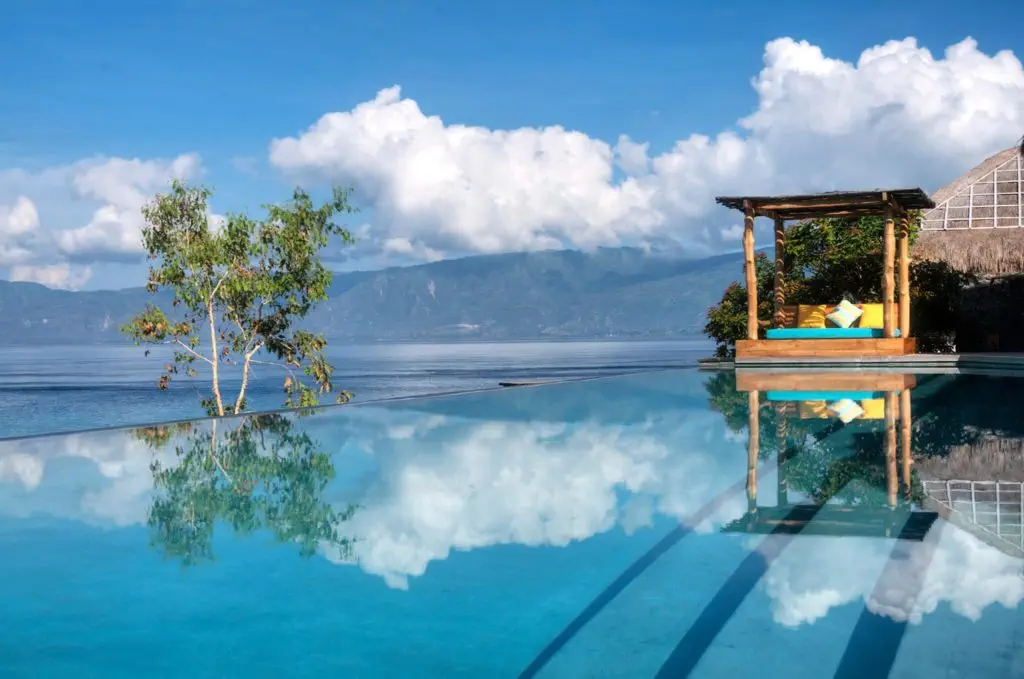
Experience Our Sustainable Resort (and Hammerheads) in Alor
Would you like to dive or snorkel with hammerheads in Indonesia? Hammerheads are just one of the many shark and marine megafauna species that we see passing through, or residing in, our beautiful Alor Archipelago.
Would you like to see Alor’s stunning reefs and marine life with likeminded professionals who put sustainability and marine protection first?
If so, we are ready to welcome you at SAVU South Alor! Explore our incredible diving and snorkeling sites, kick back and unwind on our white sand beach, and enjoy our barefoot luxury approach. We look forward to sharing our commitment to conservation and our passion for the ocean with you!
If you would like to join us in Alor contact us at: reservations@SAVUsouthalor.com or fill in our contact form. We look forward to welcoming you to SAVU South Alor soon.

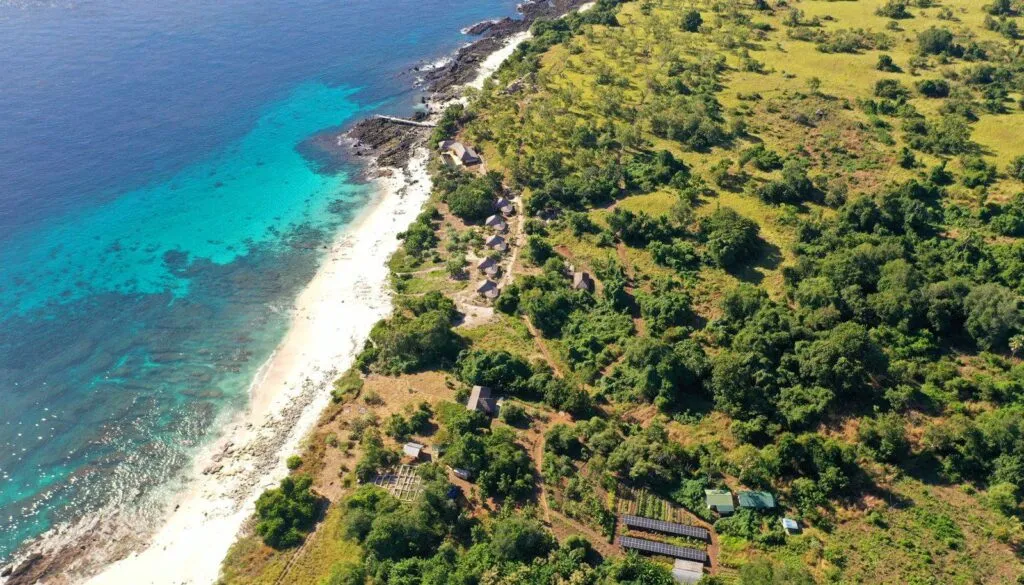
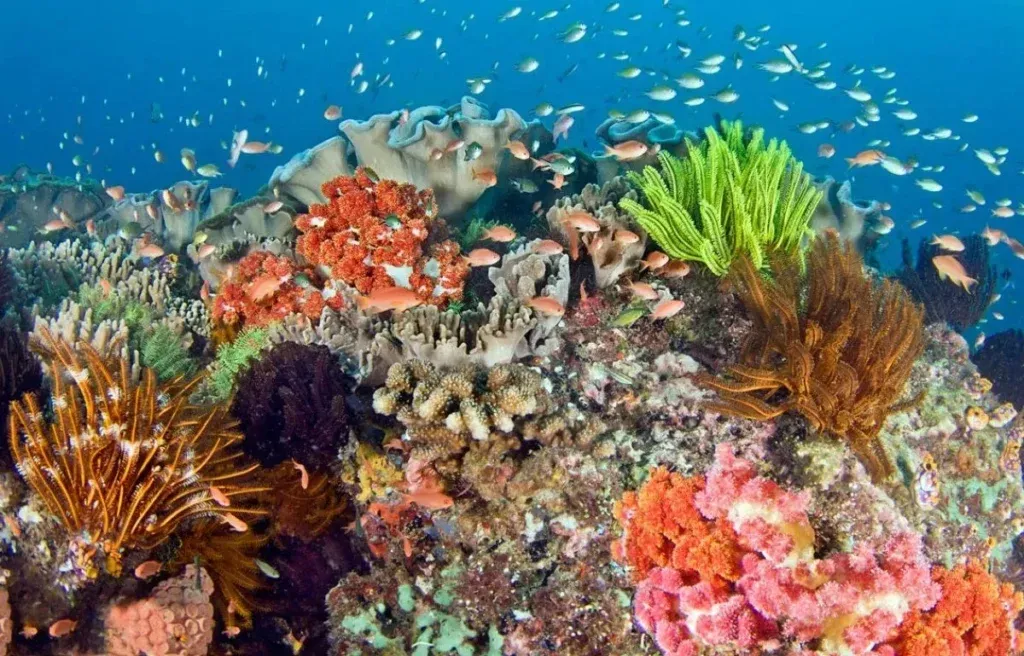
2 Comments
I am interested in diving with hammerheads end of September 25
Hallo Gerlinde,
unfortunately we are already fully booked end of September this year. There would however be one last room available from the 4th of October onwards.
Our reservations team will soon be in touch with you.
Viele Grüße,
Johannes